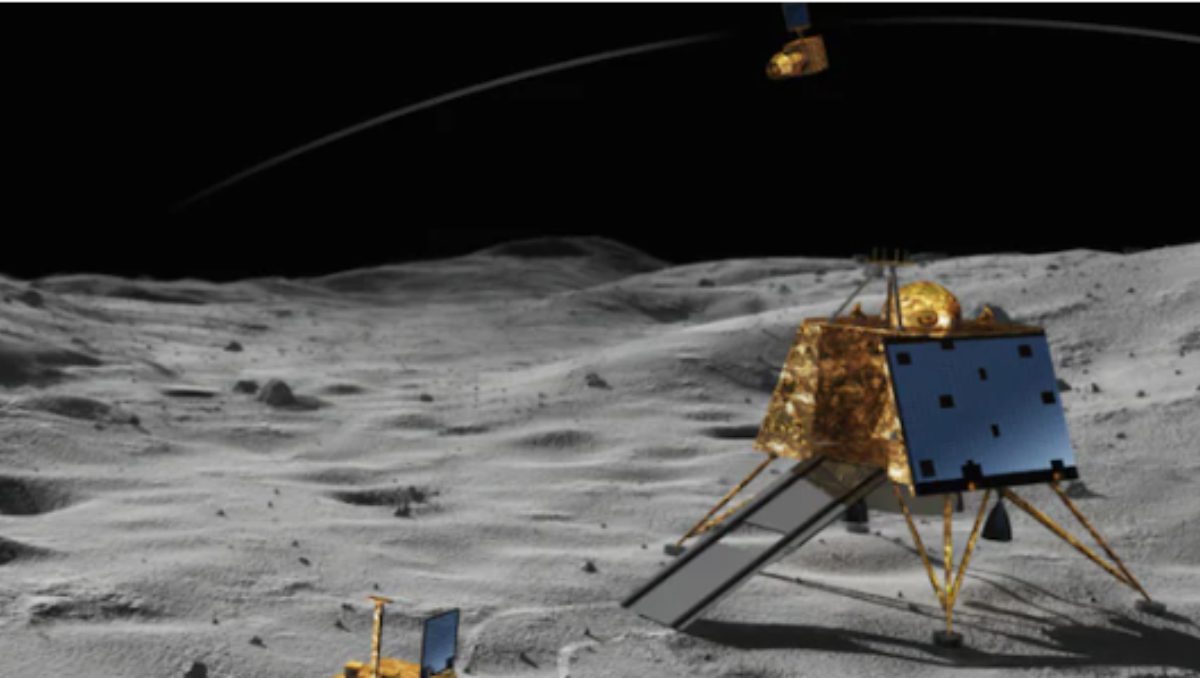Prime Minister Narendra Modi expressed deep emotion while addressing the dedicated team of scientists at the Indian Space Research Organisation (ISRO). The PM raised the slogan ‘Jai Vigyan Jai Anusandhan’ and greeted Bengaluru people outside HAL airport after his arrival in Bengaluru. “I wanted to meet you as soon as possible and salute you… salute your efforts…” he said, acknowledging the relentless dedication behind the Chandrayaan-3 mission’s success. Speaking at the ISRO Telemetry Tracking & Command Network Mission Control Complex in Bengaluru, PM Modi’s sentiments echoed the nation’s admiration for ISRO’s monumental achievement. “Today, I am feeling a different level of happiness…such occasions are very rare…this time, I was so restless…I was in South Africa but my mind was with you,” he conveyed, underscoring his unwavering dedication to India’s space endeavors. This emotional connection was palpable, signifying the immense value that Chandrayaan-3 holds for the nation and its leader.
‘Shivshakti’ and ‘Tiranga’ Point: Symbolism on the Moon
During his visit to the ISRO Telemetry Tracking & Command Network Mission Control Complex in Bengaluru, Prime Minister Modi announced that the spot where Chandrayaan-3’s moon lander touched down would be named ‘Shivshakti’, signifying India’s power and determination in exploring the lunar realm. Additionally, he revealed that the location where Chandrayaan-2 made its historic landing in 2019 would be known as ‘Tiranga Point’, a tribute to the Indian tricolor planted on the lunar surface.
National Space Day: Tribute to Chandrayaan-3’s Success.

In a significant announcement, Prime Minister Modi declared that August 23 would be celebrated as ‘National Space Day’ in India. This day would commemorate the triumphant landing of the Chandrayaan-3 mission’s lander and honor the remarkable accomplishments of India’s space program. The Prime Minister expressed immense pride in this achievement and acknowledged the significance of reaching uncharted territories in space exploration.
The journey of India’s space exploration dates back to October 22, 2008, with the launch of Chandrayaan-1, the country’s first-ever mission to the Moon. The spacecraft carried 11 scientific instruments contributed by India, the USA, the UK, Germany, Sweden, and Bulgaria. Orbiting the Moon at a height of 100 km from its surface, Chandrayaan-1 conducted critical studies in chemical, mineralogical, and photo-geologic mapping of the lunar landscape. The mission laid the foundation for subsequent lunar missions, solidifying India’s reputation in the global space community.
As soon as the Prime Minister announced the 23rd August as National Science Day, A petition emerged on Change.org, initiated by Mihir Shah, advocating for the declaration of August 23 as ‘ISRO Day’. The petition cites the need to honor and celebrate the remarkable contributions of ISRO’s scientists. With 3,000 supporters and counting, this movement seeks to instill national pride and inspire future generations to pursue limitless aspirations.
India’s Chandrayaan-3 achieved an unprecedented milestone as it gracefully touched down on the lunar south pole on Wednesday at 6:04 PM. This triumph places India among an exclusive club of four nations that have successfully landed on the lunar surface. Notably, India becomes the first nation to achieve this feat near the Moon’s south pole.
Prime Minister Narendra Modi’s visit to the ISRO headquarters in Bengaluru marked a moment of great pride and celebration for India’s space achievements.
Chandrayaan-3’s achievements, coupled with symbolic names and declared celebration days, signal a shift in how India perceives and values its space endeavors. Nevertheless, a critical evaluation of emotional involvement within the context of leadership is necessary to ensure that the pursuit of scientific excellence remains unhindered by individual sentiments. As India continues to push the boundaries of space exploration, these achievements serve as a testament to the dedication and ingenuity of its scientific community.












